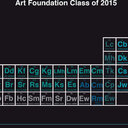Mutant Dentin Sialophosphoprotein Causes Dentinogenesis Imperfecta.
Fjalë kyçe
Abstrakt
Dentin sialophosphoprotein (DSPP) is an extracellular matrix protein highly expressed by odontoblasts in teeth. DSPP mutations in humans may cause dentinogenesis imperfecta (DGI), an autosomal dominant dentin disorder. We recently generated a mouse model (named "DsppP19L/+ mice") that expressed a mutant DSPP in which the proline residue at position 19 was replaced by a leucine residue. We found that the DsppP19L/+ and DsppP19L/P19L mice at a younger age displayed a tooth phenotype resembling human DGI type III characterized by enlarged dental pulp chambers, while the teeth of older DsppP19L/+ and DsppP19L/P19L mice had smaller dental pulp chambers mimicking DGI type II. The teeth of DsppP19L/+ and DsppP19L/P19L mice had a narrower pulp chamber roof predentin layer, thinner pulp chamber roof dentin, and thicker pulp chamber floor dentin. In addition, these mice also had increased enamel attrition, accompanied by excessive deposition of peritubular dentin. Immunohistochemistry, in situ hybridization, and real-time polymerase chain reaction analyses showed that the odontoblasts in both DsppP19L/+ and DsppP19L/P19L mice had reduced DSPP expression, compared to the wild-type mice. We also observed that the levels of DSPP expression were much higher in the roof-forming odontoblasts than in the floor-forming odontoblasts in the wild-type mice and mutant mice. Moreover, immunohistochemistry showed that while the immunostaining signals of dentin sialoprotein (N-terminal fragment of DSPP) were decreased in the dentin matrix, they were remarkably increased in the odontoblasts of the DsppP19L/+ and DsppP19L/P19L mice. Consistently, our in vitro studies showed that the secretion of the mutant DSPP was impaired and accumulated within endoplasmic reticulum. These findings suggest that the dental phenotypes of the mutant mice were associated with the intracellular retention of the mutant DSPP in the odontoblasts of the DSPP-mutant mice.




